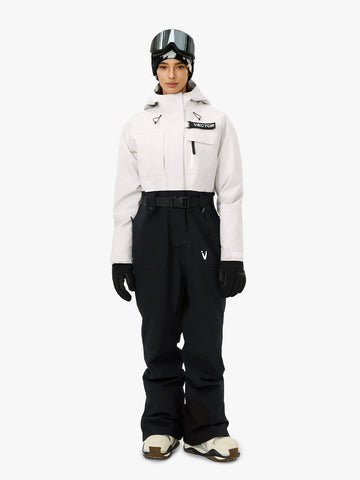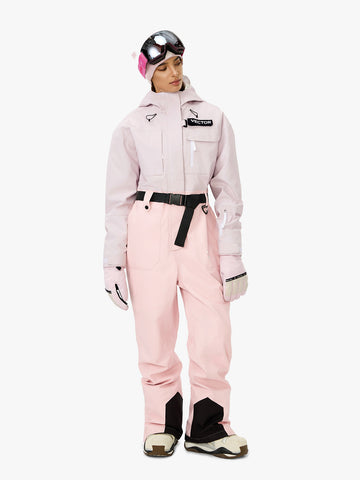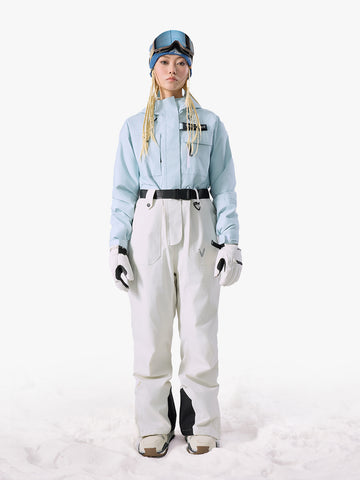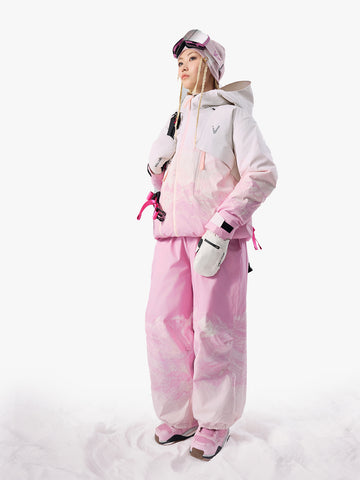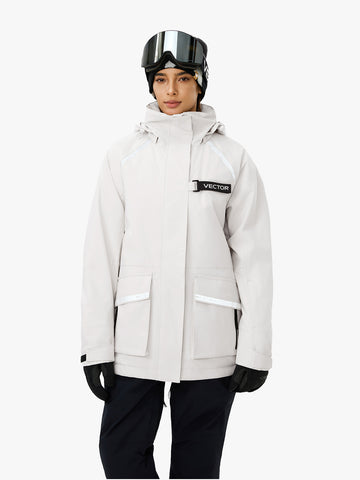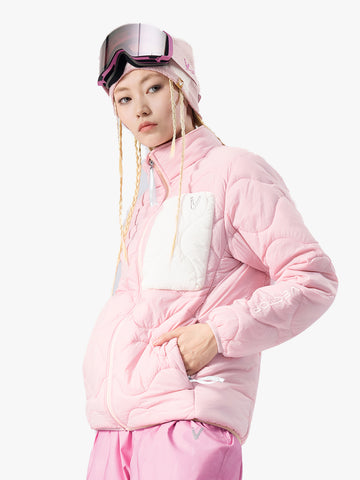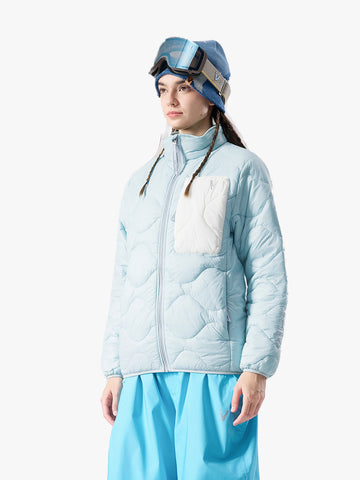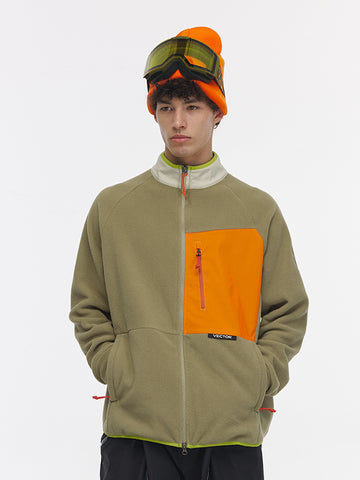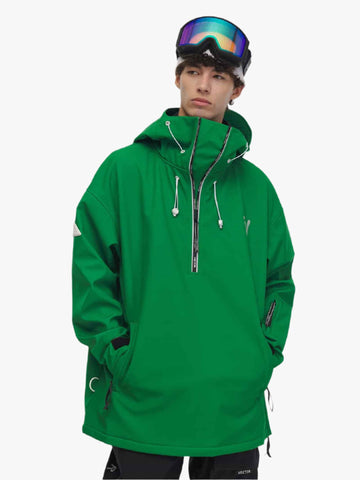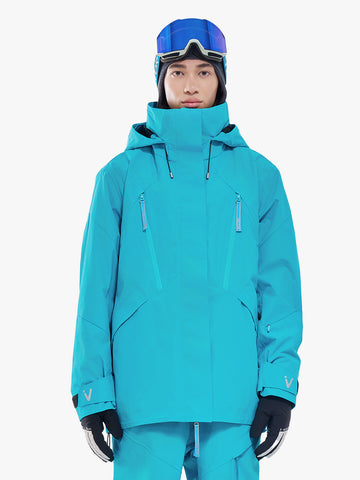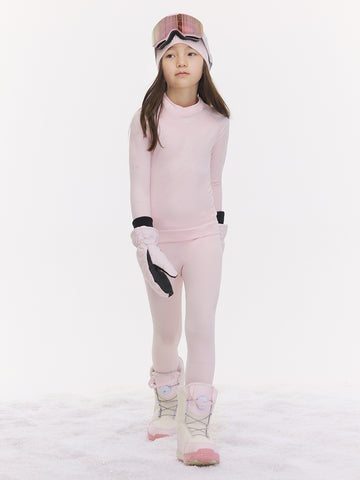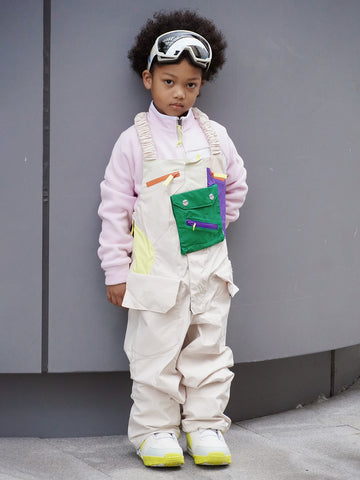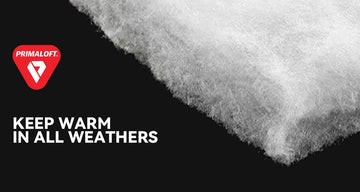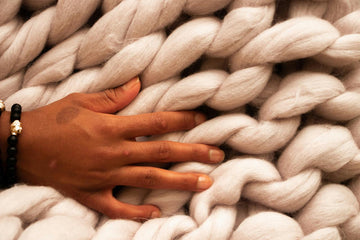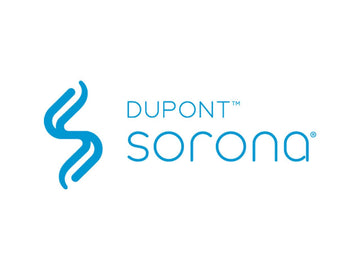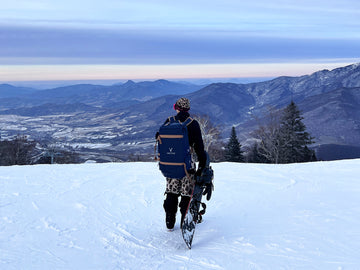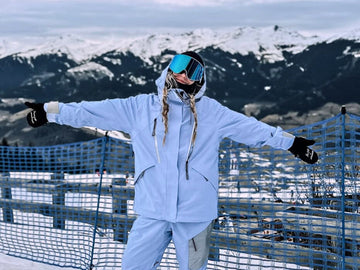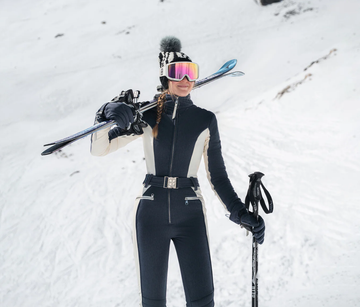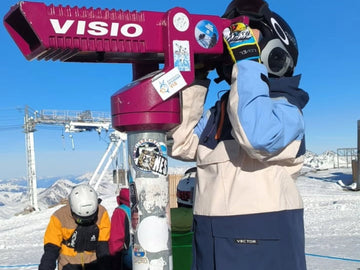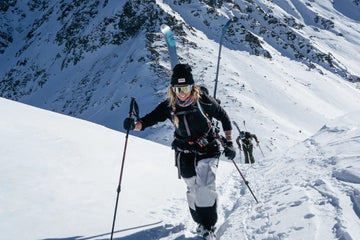Considering that first-time snowboarding player primarily focus on trial and experience, it is not advisable to blindly purchase top-of-the-line equipment until their personal preferences are determined. We can categorize snowboarding gears into four main types:
1. Resort Rental Gears: This includes snowboards and bindings, snowboard boots, helmets, snow goggles, and snowsuits
2. Personal Gears to Prepare: Snowboarders should prepare their own gloves for snowboarding, face masks, snowboard base layers, and snow socks.
3. Recommended Snowboard Preparation: Protective gears
4. Other Gears: Additional items such as sunscreen, sunglasses, and small snacks can enhance the snowboarding experience

Resort Rental Gears
Snowboard & Bindings
Choosing the right snowboard length involves considering factors such as height, weight, board shape, snow conditions, and skill level. However, beginners trying it out for the first time don’t need to worry too much about this. A simple reference is to choose a board length that is equal to your height minus 20cm. Alternatively, seek assistance from a snowboard coach to help you pick the suitable size. Go for a versatile "All Mountain" snowboard type, as it offers strong adaptability, which is ideal for beginners focusing on basic skills rather than advanced techniques. Bindings come with the rental snowboard and securely fasten your boots to the board. The resort staff will help you select the appropriate size.
Snowboard Boots
Rent snowboard boots according to your normal shoe size, avoiding one size larger to prevent discomfort and toe squeezing. Make sure they are comfortable! Snowboarders' strength is transmitted through the boots to the snowboard, affecting the control of sliding. Therefore, the boots must fit well, with neatly arranged inner lining and snow socks, tightened drawstrings and shoelaces, and a snug fit around the feet and ankles. Initially, wearing snowboard boots might feel bulky or cumbersome, but you'll gradually adapt to them.
Snowboard Helmet
First and foremost, wearing a helmet when snowboarding is essential! Renting one for a trial is okay, but if you're keen on snowboarding, consider getting your own helmet as soon as possible. Your own helmet will be a better fit, more comfortable, and safer than a rented one. After renting, check the helmet for cracks and ensure that knobs, buckles, and webbing are in good condition. Make sure it fits properly with the head circumference and secure the webbing to prevent looseness or detachment, effectively protecting your head.
Snow Goggles
Snow goggles are a must to prevent wind and block sunlight, reducing irritation and damage to the eyes. It's strongly recommended to wear them when snowboarding outdoors. Goggles should be worn outside the helmet to ensure a smooth fit between the helmet and head. Don't wear them inside the helmet just for the sake of looking cool. Safety always comes first, and sunglasses cannot replace snow goggles.
Snowboard Jacket and Pants
Most ski & snowboard resorts provide snow clothing for rent, including snow jackets and pants. However, if you mind wearing clothes worn by others or want to take beautiful photos during your first snowboarding trip, it's best to purchase your own set. When choosing snowboard suits, ensure they have sufficient waterproof and breathable functions.
Personal Gears to Prepare

Gloves
Fingers and toes are the most susceptible to frostbite, so it's essential to invest in a pair of warm gloves. Ordinary woolen gloves won't suffice; opt for waterproof snowboard gloves. Also, consider getting gloves with a fall-resistant lanyard to prevent loss when removing them.
Facemasks
Facemasks are crucial for wind protection, warmth, and preventing sunburn, especially on windy and snowy days.
Base Layers
Base layers are often overlooked but are vital for snowboarding, as you may sweat during activity and feel cold when resting. Wear quick-drying, moisture-wicking, and snug-fitting clothes underneath the snowsuit to keep dry and warm at all times. Quick-drying clothes are recommended for indoor snowboarding, and if you're outdoors or sensitive to cold, consider dressing in layers according to the "three-layer system".
Snow Socks
Long and warm snow socks, usually made of wool material, should be worn over quick-drying pants to reduce friction between calves and snowboard boots. It's okay to use socks from home, but make sure they are long and thick enough.
Recommended Protective Gear
Protective gear is essential for preventing injuries from falls, especially for beginners experiencing buttock and knee pain or bruises after a day of sliding. Protective gear can be worn outside or underneath the clothing. For beginners to advanced levels, innerwear is more convenient and aesthetically pleasing. Other Gears Sunscreen Wearing sunscreen is essential, even in winter. Sunlight reflection on the snow can be stronger than in summer. Choose a high SPF and sweat-resistant sunscreen to prevent sunburn during prolonged exercise. Sunglasses For outdoor snowboarding, sunlight reflection on the snow can be strong. Prepare a pair of sunglasses to protect your eyes when not snowboarding. Snacks Bring along small snacks like chocolate or protein bars to replenish your energy during breaks.
FAQ:
Q: Can I use regular snow boots to snowboard?
A: No, regular winter or snow boots are not suitable for snowboarding. They lack the necessary support and protection required for snowboarding. Specialist snowboard boots, which are thicker and more rigid, should be used for this sport.
Q: What is the most common place on the body for a beginner snowboarder to be injured?
A: The most common injuries for beginner snowboarders are to the wrists and knees. Falling frequently is a normal part of learning, but it's important not to try and break the fall with the wrists. Beginners should consider using gloves with inner wrist guards and knee pads to minimize the risk of injury.
Q: Tips for your first snowboard holiday?
A: Apart from following the recommendations in our article to prepare for your snowboarding adventure, choose a resort with beginner-friendly slopes – gentle and wide, without crowded skiers and snowboarders racing through. Additionally, consider taking a few lessons in the early stages to build confidence and improve your skills. This will make your first snowboard holiday more enjoyable and safe.
References:
https://www.curated.com/journal/506000/what-you-need-to-know-for-your-first-time-snowboarding
https://www.youtube.com/watch?v=lpx2kH96L_A https://www.rei.com/learn/expert-advice/planning-your-first-time-skiing-or-snowboarding.
html https://nonstopdestination.com/first-time-snowboarding-more-falling-and-injuries/
https://travel.usnews.com/features/the-best-ski-resorts-in-the-us
Related Guides:
How Do I Choose a Snowboard Jacket?
How to Choose Snowboard Pants & Bibs?
How to Dress for Snowboarding?
